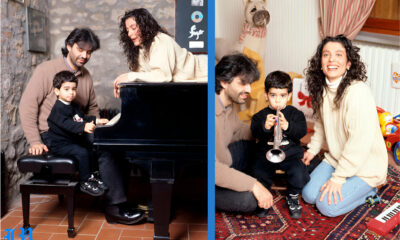LifeStyle
Boutonnieres: Tradition, Style, and Crafting Your Own
Published
10 months agoon
By
Bilal
A boutonniere is more than just a small flower pinned to a lapel; it symbolizes elegance, tradition, and attention to detail. Whether it’s for a wedding, prom, or a formal event, the boutonniere adds a touch of refinement to any attire. In this guide, we will delve into the world of boutonnieres, exploring their history, various types, how to make one, and even the unique “boutonniere deformity.” We’ll also provide tips on finding the best “boutonniere near me” and discuss the difference between a “corsage and boutonniere.” Let’s start by understanding what makes a boutonniere special and how you can incorporate this stylish accessory into your wardrobe.
1. The History and Significance of the Boutonniere
The tradition of wearing a boutonniere dates back centuries. Originally, men wore flowers in their buttonholes to ward off bad luck, bad smells, and even evil spirits. Over time, the boutonnière evolved from a superstitious symbol to a fashionable accessory that represents sophistication and grace.
Today, boutonnieres are most commonly seen at weddings, proms, and other formal occasions. They symbolize the wearer’s role in the event, often distinguishing the groom and his groomsmen or other male participants in a ceremony.
2. Different Types of Boutonnieres
Boutonnieres come in a variety of styles, each suited to different occasions and personal preferences. Here are some popular types:
Traditional Boutonniere
- Typically made with a single flower, such as a rose or carnation.
- Pinned to the left lapel, right above the heart.
- Often features a small cluster of leaves or a sprig of greenery for added elegance.
Pocket Boutonniere
- A modern twist on the traditional boutonniere.
- Designed to slip into the breast pocket of a jacket, eliminating the need for pins.
- Popular among younger generations for its sleek, minimalistic look.
Corsage and Boutonniere
- A corsage is typically worn by women, while a boutonniere is worn by men.
- Both serve similar purposes in formal events, often matching in color and style.
- Understanding the difference between a “corsage and boutonniere” is essential for coordinating a unified look at events like weddings and proms.
3. Boutonniere Deformity: What Is It?
While the term “boutonniere deformity” might sound like a misstep in fashion, it actually refers to a medical condition. A boutonniere deformity occurs when the tendons in the finger are injured, causing the finger to bend at the middle joint while the fingertip bends back. This condition often results from trauma or rheumatoid arthritis and requires medical attention to prevent permanent deformity.
Although unrelated to the flower accessory, it’s interesting to note the connection in terminology. If you or someone you know suffers from this condition, it’s important to consult with a healthcare professional for proper diagnosis and treatment.
4. How to Make a Boutonniere: A Step-by-Step Guide
Creating your own boutonniere can be a rewarding experience, adding a personal touch to your attire. Here’s how to make a boutonniere at home:
Materials Needed:
- A fresh flower of your choice (rose, carnation, or orchid)
- Small sprigs of greenery or filler flowers
- Floral tape
- Scissors
- A pin or safety pin
Step-by-Step Instructions:
- Select Your Flower: Choose a flower that complements your outfit and the event’s theme. Roses and carnations are popular choices, but feel free to get creative!
- Trim the Stem: Cut the stem to about 2-3 inches long. Remove any thorns or leaves from the stem.
- Add Greenery: Arrange small sprigs of greenery or filler flowers around the main flower. This adds texture and fullness to your boutonniere.
- Secure with Floral Tape: Wrap the stems tightly with floral tape to hold the arrangement together.
- Pin It: Attach the boutonniere to the left lapel of your jacket using a pin or safety pin. Make sure it’s securely fastened and sits comfortably.
By following these steps on “how to make a boutonniere,” you can create a beautiful, personalized accessory for any formal occasion.
5. Finding the Perfect Boutonniere Near You
If you’re not keen on making your own, finding a “boutonniere near me” can be as simple as visiting a local florist. Florists often offer a range of boutonnieres, from traditional to contemporary styles. Here are some tips for selecting the perfect boutonniere:
- Check Local Florists: Visit or call local florists to inquire about their selection. Many florists also offer custom-made boutonnieres to match your specific needs.
- Read Reviews: Online reviews can provide insight into the quality and service of local shops.
- Consider Online Options: Some online floral shops offer delivery services for boutonnieres, providing convenience if you’re short on time.
6. Boutonnières in Modern Fashion
The boutonniere is not just a relic of the past; it has found a place in modern fashion as well. Contemporary designers often incorporate boutonnieres into their runway shows, using them as statement pieces to complement a variety of styles. The “pocket boutonniere,” for instance, has become a favorite among fashion-forward individuals looking to add a unique touch to their outfits without the fuss of pins.
Boutonnieres are also making a comeback in casual settings, where they are worn on blazers, coats, and even hats, offering a stylish twist on traditional menswear. Whether for a formal event or a casual outing, the boutonniere remains a versatile accessory that adds a dash of elegance to any ensemble.
7. Frequently Asked Questions (FAQs)
What is a boutonniere deformity?
A boutonniere deformity is a medical condition where the middle joint of the finger bends down, while the outer joint bends back. This condition is unrelated to the floral accessory and requires medical attention.
How do you pin a boutonniere?
To pin a boutonniere, place it on the left lapel of your jacket, ensuring it sits comfortably above the heart. Use a pin or safety pin to secure it through the stem and fabric, ensuring it is tightly fastened.
What is the difference between a corsage and a boutonniere?
A corsage is typically worn by women, often on the wrist or dress, while a boutonniere is worn by men on the lapel of a jacket. Both are floral accessories worn at formal events but differ in style and placement.
Can I make my own boutonniere at home?
Yes, making your own boutonniere at home is simple and can be a fun, creative project. Follow the step-by-step guide provided above for an easy DIY boutonniere.
Where can I find a boutonniere near me?
Local florists are a great place to find a boutonniere. You can also search online for shops that offer delivery services.
8. Conclusion
The boutonniere, with its rich history and timeless elegance, continues to be a cherished accessory in both traditional and modern fashion. Whether you’re learning “how to make a boutonniere” yourself or searching for the perfect “boutonniere near me,” understanding the various types and styles can help you choose the best option for any occasion. Embrace the charm of this small but significant detail, and let your boutonniere make a statement at your next event.

Who Is Lynn Hamilton? Celebrating the Life and Legacy of the American Actress

Who is Mickey Gooch Jr? The Dynamic Journey of a Film Producer and Actor

Who Is Pierre Bouvier? All About the Canadian Singer and Musician Behind Simple Plan

Who Is Pearl Minnie Anderson? Rising Star in Maya Rudolph’s Legacy

Who is Minnie Pearl? The American Comedian Who Brought Country Humor to the Spotlight

Who Is Kavan Smith? The Canadian Actor Known for His Versatile Roles

Who is Olivia Rose Cameron: The Creative Artist & Daughter of Kirk Cameron

Who Is Markella Kavenagh? All About the Australian Actress and Rising Star

Who is Tracey Hinds? Exploring the Life of Macy Gray’s Ex-Husband and Mortgage Broker

Who is Eric Weinberger? A Visionary Television Producer Shaping Sports Media

Who Is Dan Jeannotte? All About the Canadian Actor’s Career and Roles

Who Is Paul Fenech? Inside the World of the Australian Filmmaker and Actor

Who Is Merri Kelly Hannity? All About Sean Hannity’s Daughter

Who Is Diana Espinoza Aguilar? The Story of Rafael Caro Quintero’s Wife

Who is Charlee Fraser? The Rise of the Australian Model and Actress Making Global Waves

Who Is James Lesure? All About the American Film and Television Actor

Who Is Toru Ohtani? All About Shohei Ohtani’s Father & Baseball Coach

Who is Eric Weinberger? A Visionary Television Producer Shaping Sports Media

Who is Torrei Hart? The Multitalented Actress and Comedian Making Waves

Who Is Avantika Vandanapu? Rising American Actress & Singer

Who Is Lynn Hamilton? Celebrating the Life and Legacy of the American Actress

Who is Mickey Gooch Jr? The Dynamic Journey of a Film Producer and Actor

Who Is Pierre Bouvier? All About the Canadian Singer and Musician Behind Simple Plan

Who Is Pearl Minnie Anderson? Rising Star in Maya Rudolph’s Legacy

Who is Minnie Pearl? The American Comedian Who Brought Country Humor to the Spotlight

Who Is Kavan Smith? The Canadian Actor Known for His Versatile Roles

Who is Olivia Rose Cameron: The Creative Artist & Daughter of Kirk Cameron

Who Is Markella Kavenagh? All About the Australian Actress and Rising Star

Who is Tracey Hinds? Exploring the Life of Macy Gray’s Ex-Husband and Mortgage Broker

Who is Eric Weinberger? A Visionary Television Producer Shaping Sports Media
Trending
-

 Celebrity11 months ago
Celebrity11 months agoNecati Arabacı: Net Worth, Biography, and More
-

 Celebrity12 months ago
Celebrity12 months agoDiscovering Lily Phillips: An Insight into Her Life and Career
-

 Celebrity12 months ago
Celebrity12 months agoParker Schnabel’s Girlfriend: A Comprehensive Look at His Relationships Over the Years
-

 Celebrity11 months ago
Celebrity11 months agoEnrica Cenzatti: Life of Andrea Bocelli’s Ex-Wife
